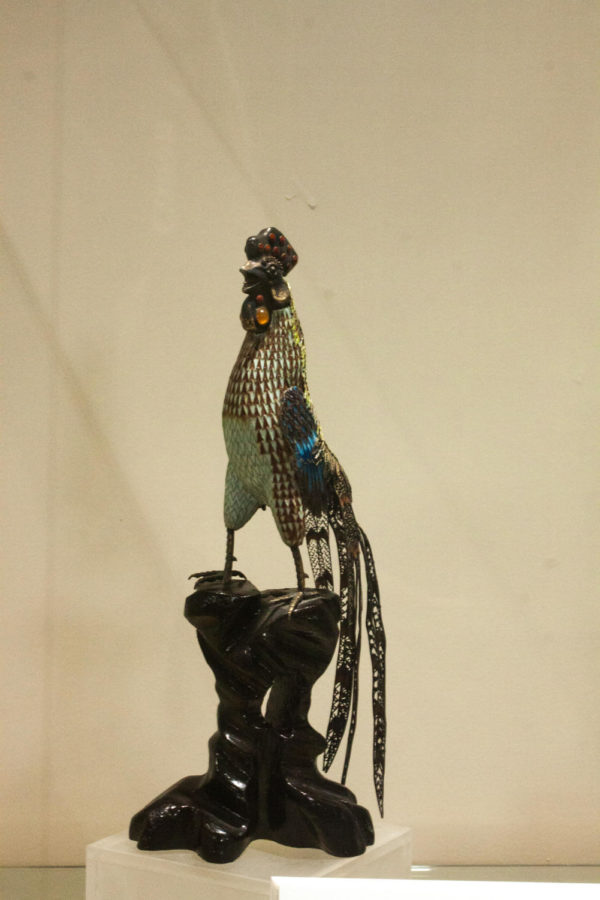‘Which Came First’: Art inspires student narratives about animal science
November 13, 2014
The Animal Science 207x class is taking on a unique assignment by creating an art exhibit in the main hallway of Kildee Hall.
The assignment required the 80-person class to pair up, research an assigned piece of poultry art and create a narrative for their piece.
The exhibition is showing 40 of the 400-piece collection that was donated to the University Museums by Charlotte and Richard Forsythe in 2012. The exhibit was titled by the class, “Which Came First”, and will begin at noon on Nov. 12. Animal Science 207x is responsible for setting up the entire exhibit and will host a reception on Nov. 12.
Jodi Sterle is the professor for Animal Science 207x and has taught this class for three years at Iowa State University, and previously for seven years at Texas A&M.
“This is just one of many assignments in the class,” Sterle said. “The class focuses on two different parts. One is the historical reference of livestock on our society and then the importance of livestock in our society, and the other part is the art part of the class when we use art as a venue to illustrate the things we’ve been talking about.”
In the past, an exhibit was not part of Sterle’s curriculum. The idea came over the summer of 2014 when Nancy Girard, Educator of Visual Literacy and Learning at the University Museums, contacted Sterle about the collection of poultry art and the potential for a new project. This project also gave Sterle’s class their first opportunity to work directly with the University Museums and curate an exhibit.
“I thought it would be a great opportunity for her students to use actual objects to communicate animal science, theories, research and interests behind their major and area of study,” Girard said. “It’s much more interesting for the students in animal science to be doing an exhibit like this. They could provide a much more interesting and fresh perspective of the collection.”
When the collection was donated, Forsythe wanted it to be used as a teaching resource, and Girard believed Sterle’s class would be the best way to teach the collection. Sterle agreed and the new assignment was put into her syllabus.
“I think it’s really cool that it’s all student driven,” Sterle said. “Our curriculum in animal science is so science based that a lot of the time our students don’t get to be creative.”
Lainey Beeftink, junior in animal science and a student in Animal Science 207x, said both her and her classmates are excited about the exhibit and to show off their semester of hard work. Beeftink was assigned to create the narrative for an untitled Cloisonné rooster from Beijing.
“Not everyone thinks of poultry art when they think of livestock art,” Beeftink said. “So I think it’ll give a different light to livestock art.”
The common goal of the exhibit among Sterle, Girard and Beeftink is to help students realize that art is for everyone and can be appreciated by everyone as well.
The class exhibit, which is showcased in the main hallway of Kildee Hall near room 1204, opened Nov. 12 and will stay in Kildee Hall until February 2015.















